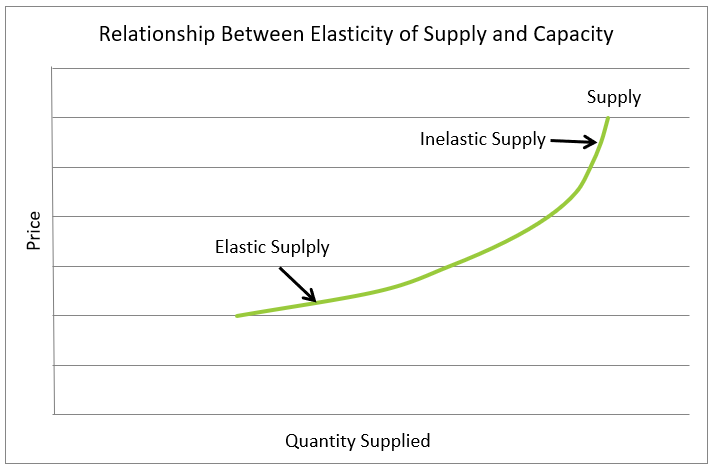Excess Capacity
View FREE Lessons!
Definition of Excess Capacity:
Excess capacity exists when a business is not operating at its potential and is able to easily increase production.
Detailed Explanation:
Assume an automobile plant has is able to manufacture 1,000 cars per day. If it is producing 600 cars a day it has excess capacity because it is able to produce 400 more cars without building a new plant. Excess capacity makes a supply curve more elastic. Companies with a supply of raw materials, the ability to quickly hire skilled workers, and a plant with an unused assembly line have excess capacity. Increases in excess capacity may be a sign that economic growth is slowing down. It also is indicative of periods of low inflation.
Generally, companies operate below their capacity when production is on the lower end of the supply curve. The curve is more elastic at lower prices. At these operating levels, companies have excess capacity. Management can quickly increase production in response to a price increase. However, when a company operates near capacity it is much more difficult to increase production because management may need to hire additional workers or expand the fixed assets such as the plant and equipment to accommodate an increase in demand. At this point, the manufacturer’s price elasticity of supply would be inelastic. Supply curves are upward sloping curves because a larger price increase is needed to prompt producers to supply more when they approach capacity.

Suppose a new school, John’s Christian Academy opened. Initially, the school had many empty desks and half-filled classrooms. In fact, some classrooms were empty. The school could easily accommodate more students. During this period, the school had excess capacity and was operating on the elastic portion of its supply curve. After several successful years, the school approached its capacity. Classes were packed, and the administration needed to convert storage areas to classrooms. John’s Christian Academy was unable to meet the increase in enrollment (demand) without hiring more teachers and expanding its facilities. The administration chose to grow slowly and increase tuition because the school was operating on the inelastic portion of the supply curve.
Dig Deeper With These Free Lessons:
Price Elasticity of Supply – How Does a Producer Respond To a Price Change
Supply – The Producer's Perspective
Factors of Production – The Required Inputs of Every Business
Price Elasticity of Demand – How Consumers Respond to Price Changes